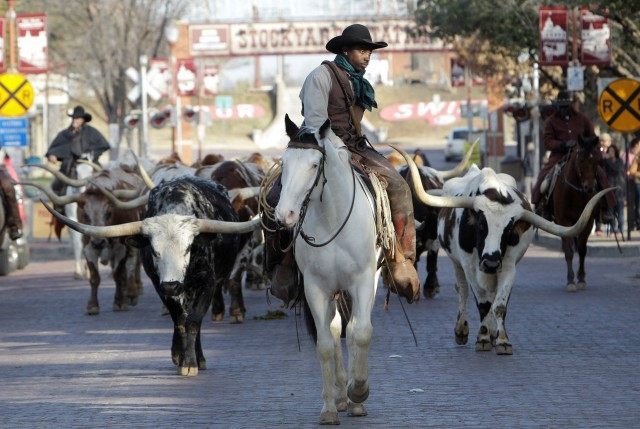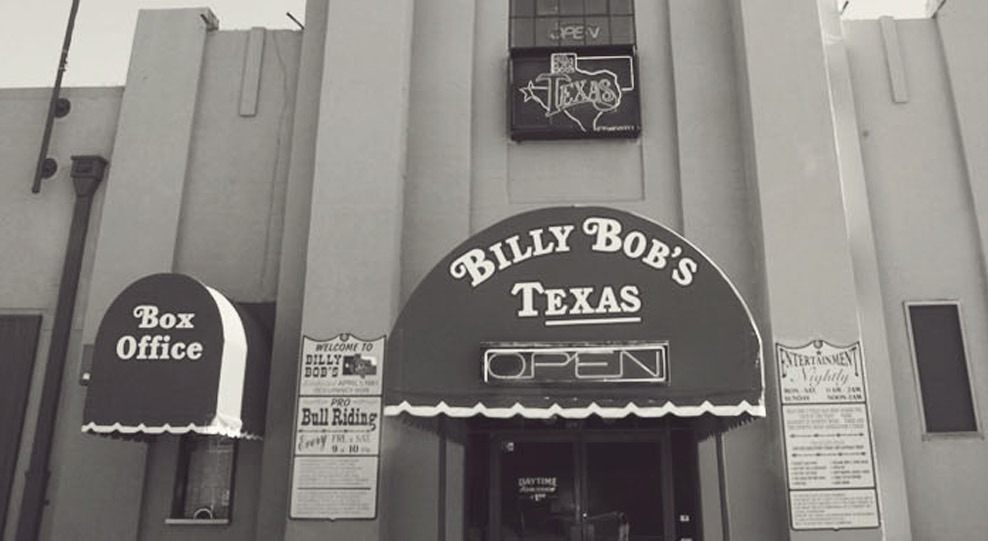The Fort Worth Stockyards, one of the icons of Texas, is in danger of being replaced by commercial development.
It was said by a Texan long ago, that we all have two homes; our own, and San Antonio. Extend that just a bit, and you could say we all have a shared Texas experience. The Fort Worth Stockyards, the most authentic view of one of the key elements in the founding and growth of our state.
For all its smell and reputation, it reached its peak of cattle, hog, sheep, and goat production during World War II, (more than 5.2 million head in 1944, that’s 100,000 per week!) and declined until the 1970s, when the last of the packing plants closed, and the pens and corrals went empty and silent.
The preservation of this area started then to show what a cattle town really was. The combination of bars and business, supplies and hand-made cowboy boots, the perfect Stetson, the coldest beer, and the world’s biggest honky-tonk.
Now, the National Trust for Historic Preservation says that the Stockyards area is in danger of being lost to commercial and hotel development.
In an article in the Fort Worth Star-Telegram, Stephanie Meeks, president of the National Trust for Historic Preservation, provided a statement:
As insensitive development threatens this historically significant place, we believe the local preservation community should be part of the city’s dialogue about the district’s future. San Antonio has the Alamo, Houston has the Astrodome, and Fort Worth has its stockyards. This historic district attracts millions of visitors each year to experience Fort Worth’s emergence as a center of the American livestock industry. A large-scale redevelopment project would forever alter the character of the Stockyards Historic District.
This will shape up as a major fight of history vs. development, of new building vs. old buildings—a struggle between the future of Texas and the past.
The trust called the Stockyards “one of the most distinctive historic sites in Texas,” and it is threatened by the planned $175 million development project proposed by a joint venture between the Hickman family of Fort Worth and California-based Majestic Realty.
The Majestic group said it wants to build hotels, residential units, shopping, and entertainment venues on 70 acres it controls but has not yet disclosed specific plans.
The Hickmans, landowners for more than 30 years, plan for the development on the east side of Main Street, adjacent to the former packing plants and the stockyards.
For its part, the city wants to get moving on the development—and the preservation.
“Being ranked on the National Trust’s list serves as a reminder that the community must continue to work collaboratively on the future of the Stockyards,” Mayor Betsy Price said. “We must respect and honor its past and balance the individual property rights in ways that ensure that we will have this true Fort Worth gem for generations to come.”
Historic Fort Worth, which nominated the Stockyards, said making the list was “a happy surprise.” Jerre Tracy, executive director said the group, hopes it creates awareness surrounding the proposed development in the district on North Main Street and Exchange Avenue.
“It’s Fort Worth’s core identity,” Tracy said. “And it’s very important. It’s validating to have a national group single something out in your city.” The area gained recognition in the CBS TV series “Walker, Texas Ranger” since the White Elephant Saloon on Exchange St. was used on a regular basis as a watering hole after a tough day of Rangering by Chuck Norris, Clarence Gilyard Jr., Nia Peeples, Judson Mills, and Noble Willingham.
After tourist redevelopment hit the stockyards in the late 1990s, adding daily Longhorn cattle drives and bringing in new restaurants, bars, and shops, it took until 2014 for the Fort Worth City Council to approve property and sales-tax incentives for the Stockyards Heritage project, and approved zoning changes in the Stockyards District. Council members have vowed to protect the Stockyards and its character.
The City Council more recently set up a 15-member task force of civic and city leaders that has been meeting for several months with a consultant to establish design guidelines for the Historic Stockyards. Those meetings have often been contentious when the issue of historic preservation comes up. It turns out that less than 10% of the area’s buildings enjoy protection from demolition. The task force is scheduled to complete its work by the end of August. The developer expects to share the concept plan with the task force at its July 29 meeting.
The National Trust wants any development to proceed in a “smart and respectful” manner, according to Betsy Weidower, the NTHP’s field rep in Houston. And the Stockyards aren’t alone, even though it’s the first site in Fort Worth to make the list. Other endangered Texas properties have included the Astrodome, Fair Park’s Centennial Buildings, the Statler Hilton Hotel, and eight historic neighborhoods in Dallas.
Wiedower summed it up by calling the Fort Worth Stockyards the nation’s best example of the cattle industry: “It put Fort Worth on the map.”
Milford is a news contributor to Breitbart Texas. You can follow him on Facebook.



COMMENTS
Please let us know if you're having issues with commenting.